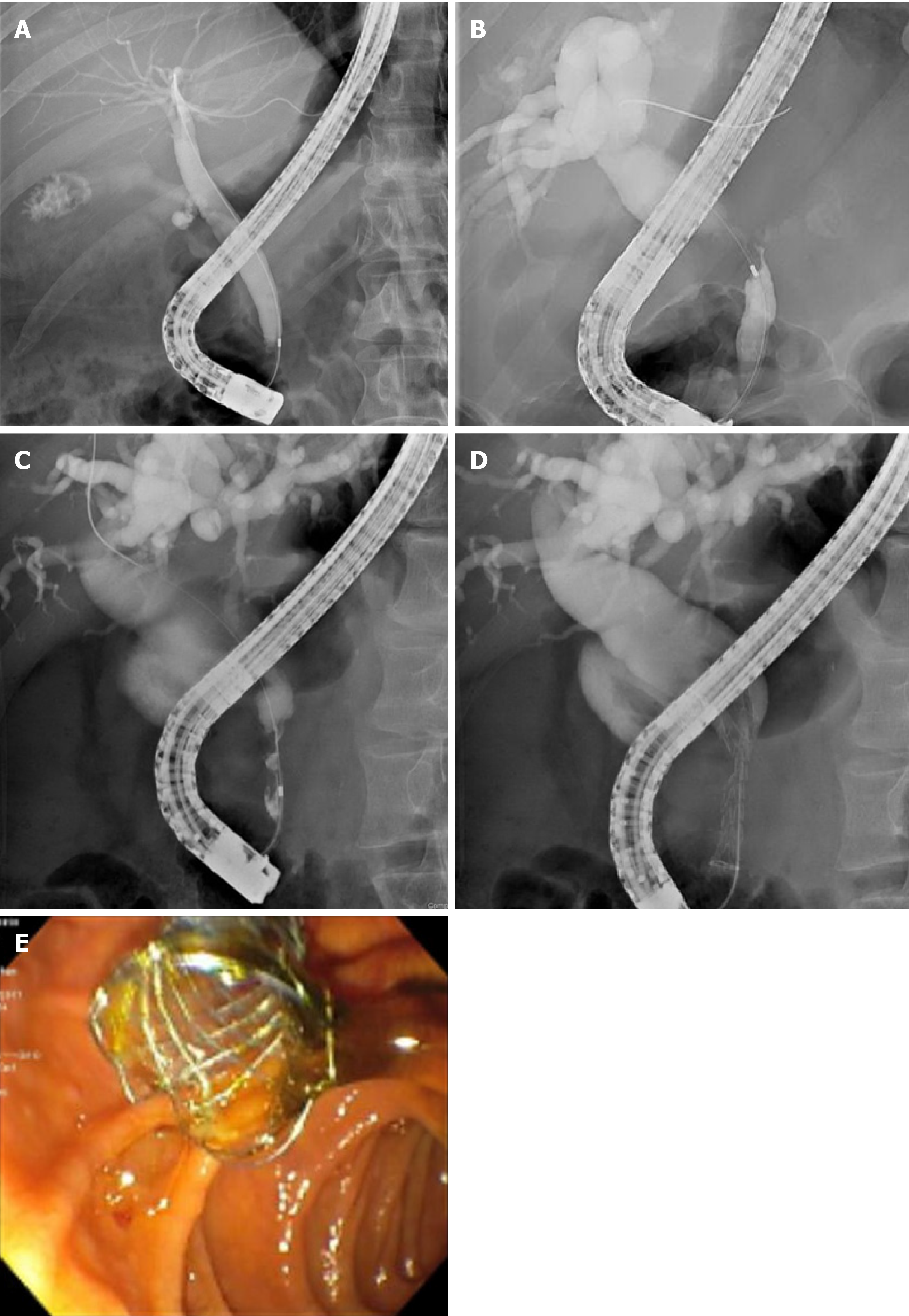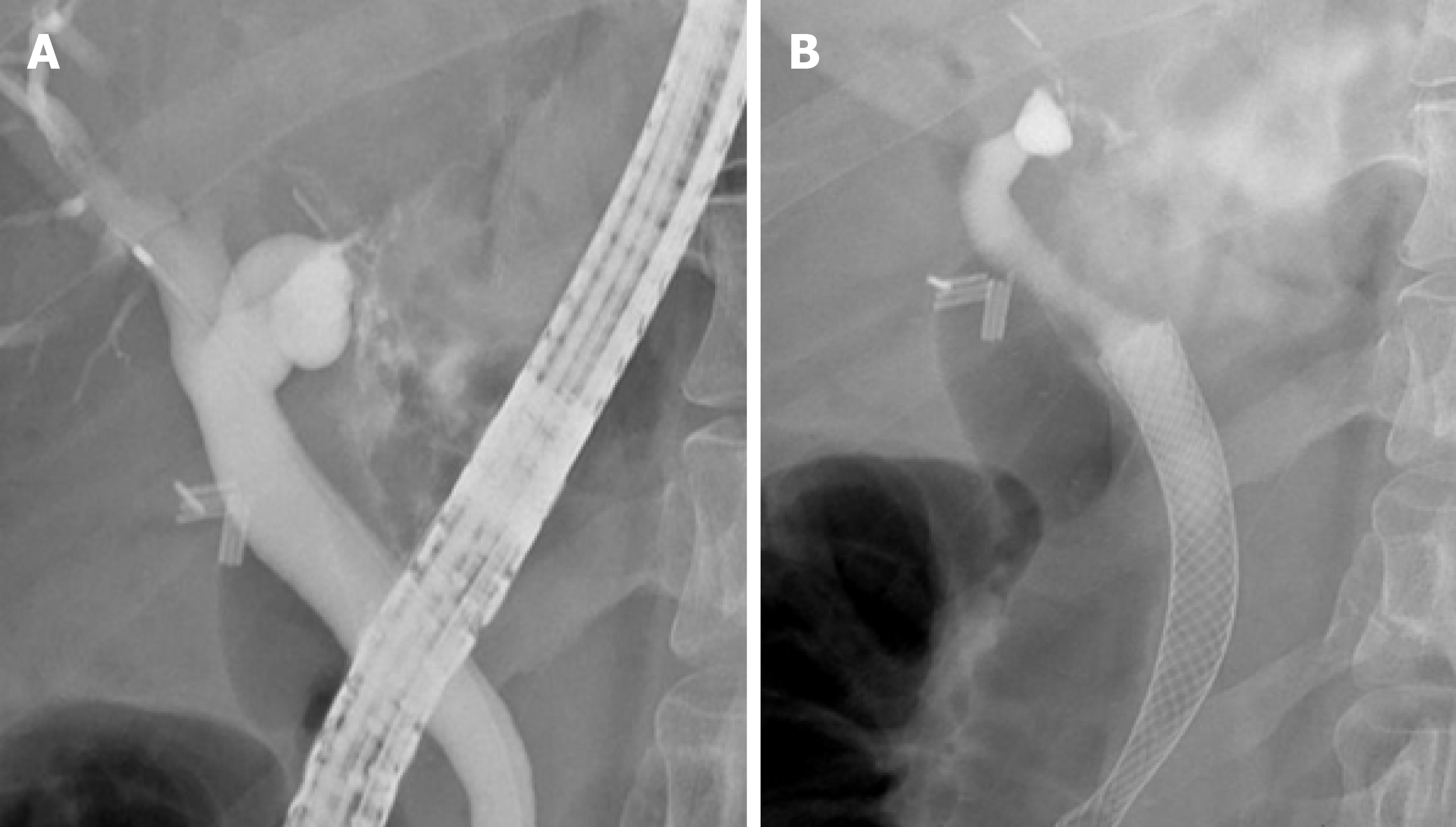Copyright
©The Author(s) 2021.
World J Gastroenterol. Oct 14, 2021; 27(38): 6357-6373
Published online Oct 14, 2021. doi: 10.3748/wjg.v27.i38.6357
Published online Oct 14, 2021. doi: 10.3748/wjg.v27.i38.6357
Figure 1 Various types of plastic and metal stents for endoscopic treatment.
A: Plastic biliary stent (10 Fr with flaps); B: Uncovered metal biliary stent; C: Partially covered metal biliary stent; D: Fully covered self-expandable metal biliary stent; E: Fully covered self-expandable metal biliary stent with anti-migration fins (Images B-D courtesy of Boston Scientific Corporation, Boston, United States).
Figure 2 Endoscopic retrograde cholangiopancreatography showing cholangiocarcinoma in mid and distal common bile duct compared to normal anatomy.
A: Normal anatomy demomonstrating patent cystic, common bile, and intrahepatic ducts; B: Mid common bile duct biliary stricture with dilated common bile duct and intrahepatic ducts; C: Distal common bile duct biliary stricture with dilated common bile duct and intrahepaptic ducts; D: Fully covered self-expandable metal stent (FCSEMS) placement in the common bile duct; E: Endoscopic view of FCSEMS placed in the distal common bile duct.
Figure 3 Endoscopic treatment of biliary leak after donor liver transplantation.
A: Extravasation of contrast at site of biliary leak; B: Resolution of biliary leak after placement of a fully covered self-expandable metal stent.
- Citation: Lam R, Muniraj T. Fully covered metal biliary stents: A review of the literature. World J Gastroenterol 2021; 27(38): 6357-6373
- URL: https://www.wjgnet.com/1007-9327/full/v27/i38/6357.htm
- DOI: https://dx.doi.org/10.3748/wjg.v27.i38.6357











